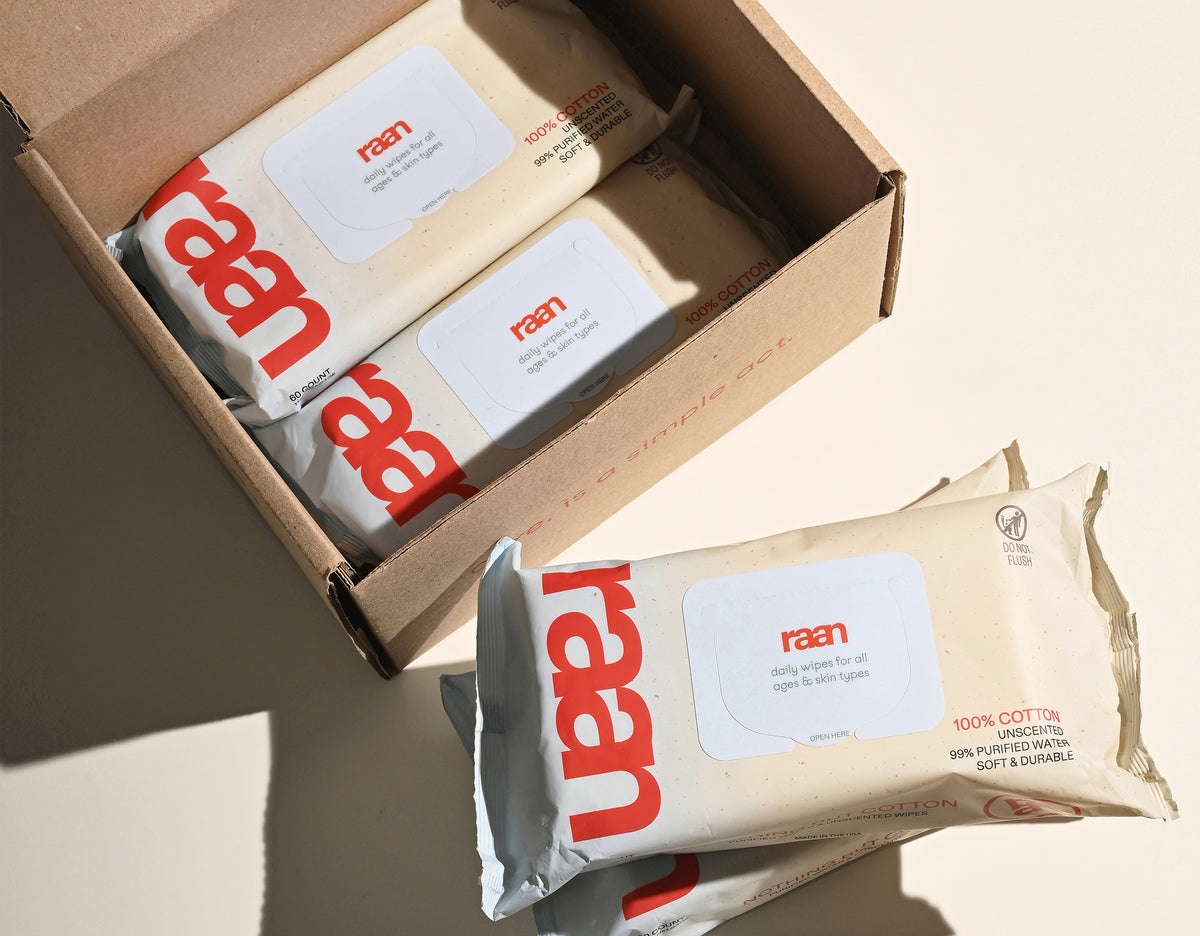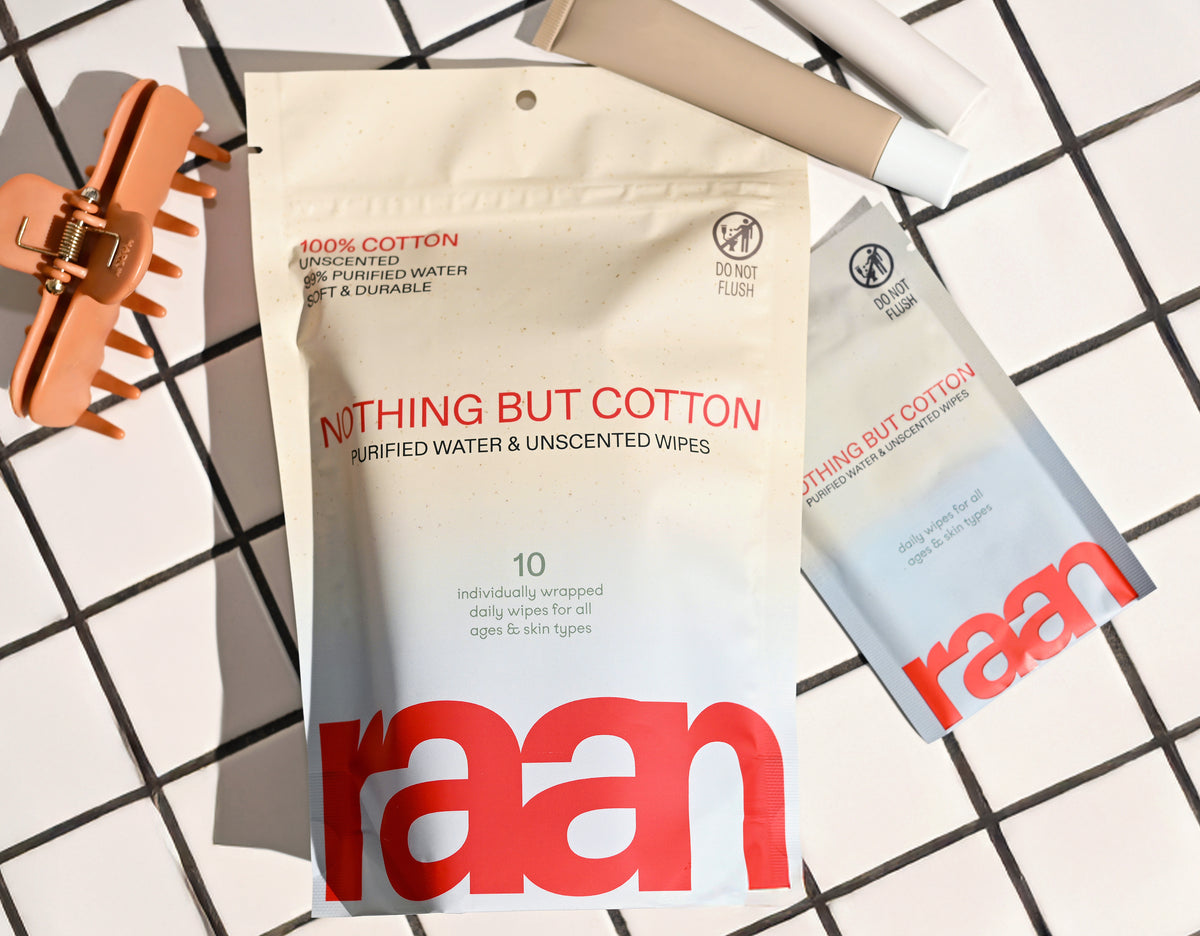Key Takeaways
- The best wipes for diaper rash are fragrance-free and alcohol-free to avoid further irritation.
- Wipes with minimal ingredients reduce the risk of allergic reactions and skin sensitivity.
- A pH-conscious formulation helps maintain the skin's natural barrier and promotes healing.
- Soft materials in wipes prevent additional friction on already irritated skin.
- Choosing the right wipes can transform diaper rash care from discomfort to gentle, effective healing.
Table of Contents
- Diaper Rash 101: Types, Triggers, and Why Wipes Matter
- How to Choose Wipes for Diaper Rash: A Clear Checklist
- Wipes vs. Water: What to Use During an Active Rash
- Comparison Guide: Which Wipe Features Help Most During Rash?
- Ingredient Deep Dive: What to Seek, What to Skip, and Why It Matters
- Technique Matters: How to Clean During a Rash Without Making It Worse
- Materials and Sustainability: What's Gentle on Skin and Easier on the Planet
- Best-of Recommendations by Scenario: Match the Wipe to the Moment
- Routine Builder: A Diaper-Change Plan That Reduces Rash Risk
- Troubleshooting: Common Problems and Targeted Fixes
- Why Our Approach Aligns with Sensitive-Skin Standards
Best Wipes For Diaper Rash: Science-First Guide
When diaper rash strikes, the best wipes for diaper rash share five non-negotiables: fragrance-free, alcohol-free, minimal ingredients, pH-conscious formulation, and soft materials that won't add friction to already irritated skin. The wrong wipe can turn a minor flare into days of discomfort, but the right choice helps restore your baby's skin barrier while keeping cleanup gentle and effective. Nothing But Cotton Wipes, Unscented are an excellent example, meeting all these criteria for sensitive skin.
During active rash, your cleaning approach matters as much as your wipe choice. Skip the scrubbing, embrace the dab-and-lift technique, and always pair with a thick barrier cream applied within three minutes of cleaning. For added convenience during travel or outings, Nothing But Cotton Wipes, Unscented, Individually Wrapped provide a hygienic, single-use option that maintains moisture and purity.
To further explore the topic and see how these recommendations compare to other leading options, you might find this overview of the best wipes helpful.
Diaper Rash 101: Types, Triggers, and Why Wipes Matter
Not all diaper rashes are created equal, and understanding the type helps you choose the right cleaning approach. Irritant dermatitis, the most common type, appears as general redness from prolonged moisture and friction. Yeast rashes show up as bright red patches with satellite spots, often after antibiotic use. Allergic contact dermatitis creates localized reactions to specific ingredients, while bacterial infections may present with pustules or honey-crusted areas.
The primary triggers work together: moisture time, stool enzymes, mechanical friction, and chemical irritants from fragrances or harsh preservatives. When urine and feces sit against skin, they raise the pH from a healthy 5.0-5.5 to over 7.0, disrupting the acid mantle that keeps harmful bacteria at bay and maintains barrier function.
Your wipe choice directly impacts three critical factors: pH balance, residue profile, and mechanical friction. A well-formulated wipe helps restore optimal pH while cleaning thoroughly without leaving films that trap moisture or irritants against the skin.
How to Choose Wipes for Diaper Rash: A Clear Checklist

Start with the ingredient panel, your most reliable predictor of skin compatibility. Look for fragrance-free, dye-free, and alcohol-free formulations with short, purposeful ingredient lists. Avoid common triggers like essential oils, botanical extracts, and harsh preservatives such as methylisothiazolinone, which can sensitize delicate skin.
The ideal formula centers on purified water with minimal, skin-friendly additives: food-grade preservatives (sodium benzoate, potassium sorbate), gentle conditioning agents (ethylhexylglycerin), natural moisturizers (organic aloe), and pH adjusters (citric acid). Each ingredient serves a specific function without unnecessary complexity.
Material matters equally. Choose soft, non-abrasive options, preferably unbleached, 100% cotton over synthetic blends that can shed microplastics and increase friction. Thicker sheets reduce the number of passes needed, while smooth edges prevent micro-tears in compromised skin. For more on why cotton is the preferred choice, see our guide to the best cotton wipes.
Green Flags:
- 5-7 ingredients maximum with clear purposes
- Unbleached natural fibers
- Food-grade preservatives only
- pH-balanced formulation
- EWG Verified or similar third-party testing
Caution Flags:
- Vague terms like "fragrance" or "parfum"
- Long ingredient lists with botanical blends
- Synthetic materials or plastic fibers
- Menthol or cooling agents
- Heavy lotion formulas that leave residue
Wipes vs. Water: What to Use During an Active Rash
When skin shows open areas, raw patches, or suspected yeast involvement, pause all wipes and switch to lukewarm water with soft cotton pads or cloths. This eliminates any potential chemical irritants while maintaining necessary hygiene. Pour-to-clean using a peri bottle works especially well for sticky stools, reducing the need for multiple wipe passes.
The water-cleaning technique requires precision: warm water to hand temperature (90-98°F), pour gently over the area, pat, never rub, with clean cotton, then air-dry for 2-3 minutes before applying barrier cream. This "within 3 minutes" rule prevents moisture from re-accumulating while ensuring protective coverage.
Reintroduce wipes gradually after 24-48 hours of improvement. Start with ultra-gentle, minimal-ingredient options using just 1-2 light passes per change on day one, increasing as skin tolerance improves. Monitor closely for any return of irritation during this transition period.
Comparison Guide: Which Wipe Features Help Most During Rash?
Different wipe characteristics serve specific needs during rash episodes. Understanding these trade-offs helps you match the right product to your situation and your baby's current skin condition.
| Feature | Why It Matters for Rash | Best Choice | Avoid |
|---|---|---|---|
| Formula Type | Fewer ingredients mean fewer potential irritants | Water-based with 5-7 ingredients maximum | Heavy lotion formulas with botanical blends |
| Material | Soft fibers reduce friction on compromised skin | Unbleached 100% cotton | Synthetic blends that shed microplastics |
| Texture | Smooth surfaces prevent micro-tears | Lightly textured for grip, smooth for contact | Heavily embossed or rough textures |
| Residue Profile | Films can trap moisture and irritants | Low-residue that dries clean | Lotiony wipes that leave heavy films |
| pH Balance | Supports skin barrier enzyme function | pH 5.0-5.5 with citric acid adjustment | Unbalanced or alkaline formulas |
| Sheet Thickness | Reduces number of passes needed | 45-60 gsm for durability | Thin sheets requiring multiple passes |
Water-only wipes excel during severe flares but lack the gentle conditioning that helps restore barrier function. pH-balanced formulas with minimal conditioning agents offer the sweet spot, effective cleaning without stripping natural protective factors or leaving problematic residues.
Ingredient Deep Dive: What to Seek, What to Skip, and Why It Matters

The best wipes for diaper rash feature purposeful ingredients that support skin barrier repair while eliminating common triggers. Purified water forms the foundation, enhanced by food-grade preservatives like sodium benzoate and potassium sorbate that prevent harmful bacterial growth without sensitizing delicate skin.
Gentle conditioning agents like ethylhexylglycerin help maintain skin moisture without heavy residues, while organic aloe provides natural soothing properties. Citric acid serves as a pH adjuster, keeping the formula within the optimal 5.0-5.5 range that supports healthy enzyme activity and barrier function.
Preservatives deserve special attention, they're essential for product safety but must be chosen carefully. Food-grade options at minimal effective concentrations offer protection without the sensitization risk of harsher alternatives like methylisothiazolinone or formaldehyde releasers. For a deeper dive into the science behind safe formulations, see this peer-reviewed study on baby wipes and skin health.
Seek These Ingredients:
- Purified water (primary ingredient)
- Sodium benzoate, potassium sorbate (food-grade preservatives)
- Ethylhexylglycerin (gentle conditioning)
- Organic aloe (natural moisturizer)
- Citric acid (pH balance)
Skip for Rash-Prone Skin:
- Fragrance, essential oils, parfum
- Drying alcohols (ethanol, isopropyl)
- Methylisothiazolinone, parabens
- Botanical extract blends
- Dyes, glitter, mica
Technique Matters: How to Clean During a Rash Without Making It Worse
Proper technique transforms even the gentlest wipe into an effective, non-irritating cleaning tool. Pre-moistening sticky stools for 15-20 seconds before wiping reduces the mechanical force needed for removal. Use 3-5 light, one-direction passes rather than scrubbing back and forth, which can create micro-tears in compromised skin.
The dab-and-lift method works best: gently press the wipe against soiled areas, allow it to absorb moisture and debris, then lift away without dragging across the skin surface. For stubborn residue, add moisture rather than pressure, a peri bottle rinse followed by gentle patting removes most sticky deposits without friction.
Complete drying before barrier application prevents moisture trapping. Air-dry for 2-3 minutes or use a cool fan setting from a safe distance. Apply barrier cream in a "frosting" layer about 1-2mm thick, using a clean finger or silicone spatula to minimize skin contact during spreading.
Step-by-Step Protocol:
- Pre-moisten sticky areas (15-20 seconds)
- Use 3-5 light passes in one direction
- Pat dry completely (2-3 minutes air time)
- Apply barrier within 3 minutes of cleaning
- Use frosting-thick layer (1-2mm) without rubbing
Materials and Sustainability: What's Gentle on Skin and Easier on the Planet
Material choice affects both skin comfort and environmental impact. Unbleached 100% cotton offers superior softness and absorbency compared to synthetic polyester or viscose blends, which can shed microplastics and create more friction against sensitive skin. Natural cotton fibers also biodegrade more readily in landfill conditions. If you're interested in eco-friendly options, learn more about biodegradable wipes and their benefits for both skin and planet.
Packaging innovations reduce plastic waste without compromising hygiene. Options like pouches that eliminate hard plastic lids can reduce plastic use by up to 70%, while incorporating 35% post-consumer waste into packaging materials and ensuring 100% recyclable outer boxes address the full product lifecycle.
Remember that even biodegradable wipes should never be flushed, they can clog systems and harm waterways. Proper disposal in household trash allows them to break down safely in managed landfill environments while protecting municipal water treatment systems.
Best-of Recommendations by Scenario: Match the Wipe to the Moment

Different rash situations call for targeted approaches. For severe, active rashes with open or weeping skin, switch immediately to lukewarm water and soft cotton pads. Avoid all wipes until you see 24-48 hours of improvement, then reintroduce with ultra-minimal, fragrance-free formulas.
For frequent diarrhea days, prioritize thicker, smooth-textured wipes that reduce the number of passes needed. Use a peri-bottle rinse before wiping to loosen sticky residue, then apply an extra-thick barrier layer. Expect to use 4-6 wipes per change with gentle, one-direction movements.
Newborns and sensitive skin need fragrance-free, minimal-ingredient wipes with pH-conscious formulas. Avoid essential oils, heavy botanical blends, and lotiony residues that can trap moisture. Look for unbleached, 100% cotton materials that won't shed microplastics or create friction. For more on this topic, see our recommendations for the best wipes for newborn.
If you're using zinc oxide creams, choose low-residue, water-forward wipes that won't strip the protective barrier layer. The goal is cleaning without removing the medicinal coating that's doing the healing work.
For on-the-go situations, travel packs with tight seals maintain moisture without contamination. Use opened packs within 4 weeks and store below 30°C/86°F to prevent ingredient breakdown.
Routine Builder: A Diaper-Change Plan That Reduces Rash Risk
Prevention beats treatment every time. A consistent routine with the right timing and technique keeps skin healthy before problems start.
Daytime protocol: Change every 2-3 hours during wake windows, immediately after any stool, regardless of timing. Build in 10-15 minutes of diaper-free time 2-3 times daily when feasible, this air exposure helps skin reset its natural barrier function.
Your step sequence matters: wipe with light passes, pat completely dry, apply barrier cream within 3 minutes of cleaning, then fasten the diaper with room for two fingers at the waistband. This prevents compression that traps moisture.
Night Routine for Rash Prevention: Apply a "frosting layer" barrier coat before bed, about 1-2mm thick. Consider one gentle night change if active rash is present, but otherwise let the barrier do its protective work for longer stretches.
Storage hygiene extends your wipes' effectiveness. Keep packs sealed between uses, store in cool, dry places, and use within 30-45 days of opening. Never add unsterile water to refresh dried-out packs, this introduces bacteria that can worsen skin irritation. For more evidence-based strategies, review this clinical review on diaper care and skin health.
Troubleshooting: Common Problems and Targeted Fixes
When your current approach isn't working, these targeted adjustments can turn things around quickly.
Rash worsened after switching wipes: The most likely culprits are fragrance, essential oils, or harsh preservatives like methylisothiazolinone. Return to a fragrance-free, minimal-ingredient formula immediately. Consider a 24-48 hour water-only reset to let skin calm before trying any new product.
Baby cries during wiping: Pre-wet the area with warm water for 15-20 seconds before wiping. Use a dabbing motion instead of dragging across sensitive skin. Warmed wipes can provide comfort, but avoid overheating, hand temperature is perfect.
Residue interferes with barrier cream: Switch to low-residue, water-forward wipes. Pat skin completely dry before applying cream. Use a silicone spatula or clean finger to spread barrier cream without friction, never rub it in like lotion.
Yeast-like rash isn't improving: Yeast thrives in moisture, so prioritize keeping the area dry. Use water cleaning where possible, extend air-dry time to 3-5 minutes, and see your pediatrician for antifungal guidance if no improvement appears within 48 hours.
Why Our Approach Aligns with Sensitive-Skin Standards

We designed our wipes specifically for the challenges outlined in this guide. Every choice, from material to formula to packaging, addresses the real needs of rash-prone, sensitive skin.
Our unbleached, 100% cotton wipes contain just five EWG-verified ingredients: purified water, sodium benzoate (food-grade preservative), potassium sorbate (food-grade preservative), ethylhexylglycerin (skin-conditioning), and organic aloe (moisturizer), balanced with citric acid for optimal pH. No fragrance, no plastic fibers, no mystery additives.
The cotton material reduces friction compared to synthetic blends, while the minimalist formula leaves no problematic residues. These wipes work seamlessly with zinc oxide barrier creams, they clean without stripping the protective layer you've carefully applied.
Use them as part of the gentle routine we've outlined: clean with light passes, pat dry thoroughly, apply barrier cream within 3 minutes. The low-residue formula supports this technique instead of fighting against it.
Our packaging reflects the same thoughtful approach, 70% less plastic by eliminating hard lids, 35% post-consumer waste in pouches, and 100% recyclable boxes. We're Women Owned, Cruelty Free, and carry the Natural Cotton certification. Recent recognition includes the 2025 National Parenting Product Awards and 2025 Baby Innovation Award.
Frequently Asked Questions
What key features should I look for in wipes to prevent or soothe diaper rash?
Look for wipes that are fragrance-free, alcohol-free, and have minimal ingredients to reduce irritation. Soft, unbleached cotton materials help prevent friction on sensitive skin, while a pH-balanced formula supports the skin’s natural barrier and promotes gentle healing.
How does the pH level of wipes affect my baby's skin during a diaper rash?
A pH-balanced wipe helps maintain your baby’s skin barrier, which is crucial during a diaper rash. Keeping the skin’s natural acidity supports healing and reduces the risk of further irritation or infection.
Why is it important to avoid fragrance and alcohol in wipes when treating diaper rash?
Fragrances and alcohol can irritate already sensitive skin, worsening diaper rash symptoms. Choosing wipes without these additives helps prevent allergic reactions and keeps the skin calm and comfortable.
What is the best technique for cleaning a baby’s skin during an active diaper rash to avoid further irritation?
Use a gentle dab-and-lift method instead of scrubbing to clean the skin. This minimizes friction and prevents aggravating the rash. Always follow with a thick barrier cream applied within three minutes to protect and soothe the skin.






